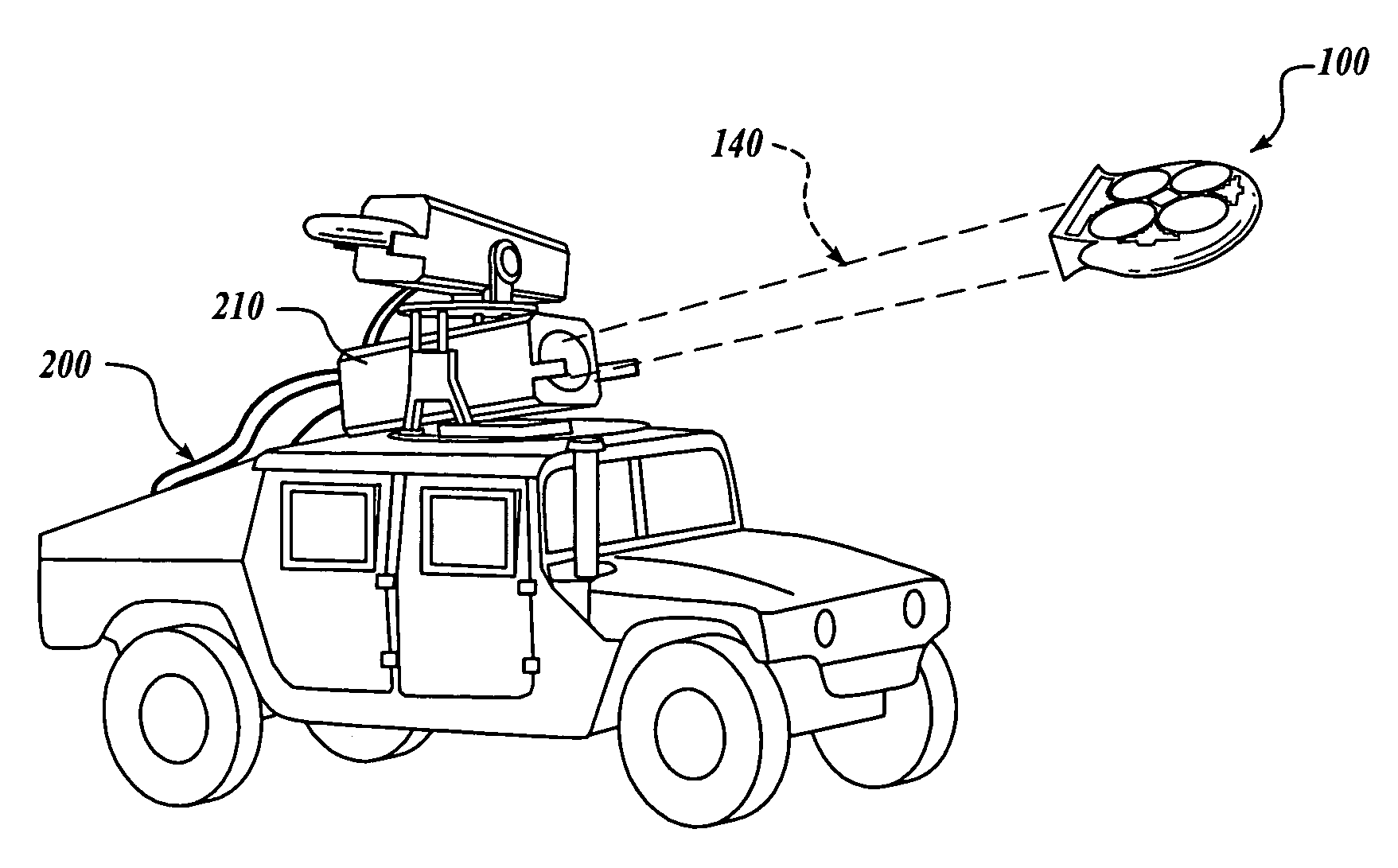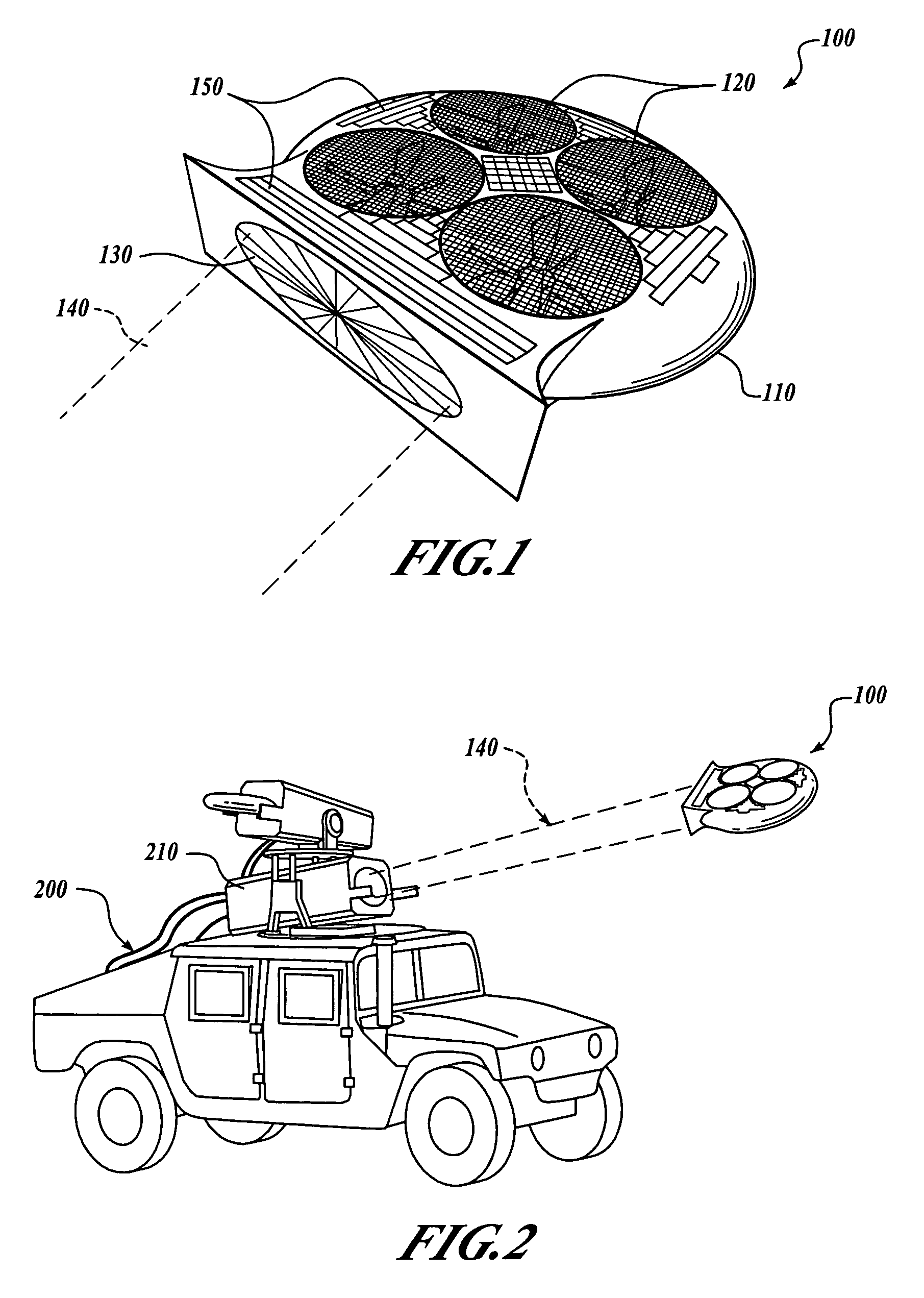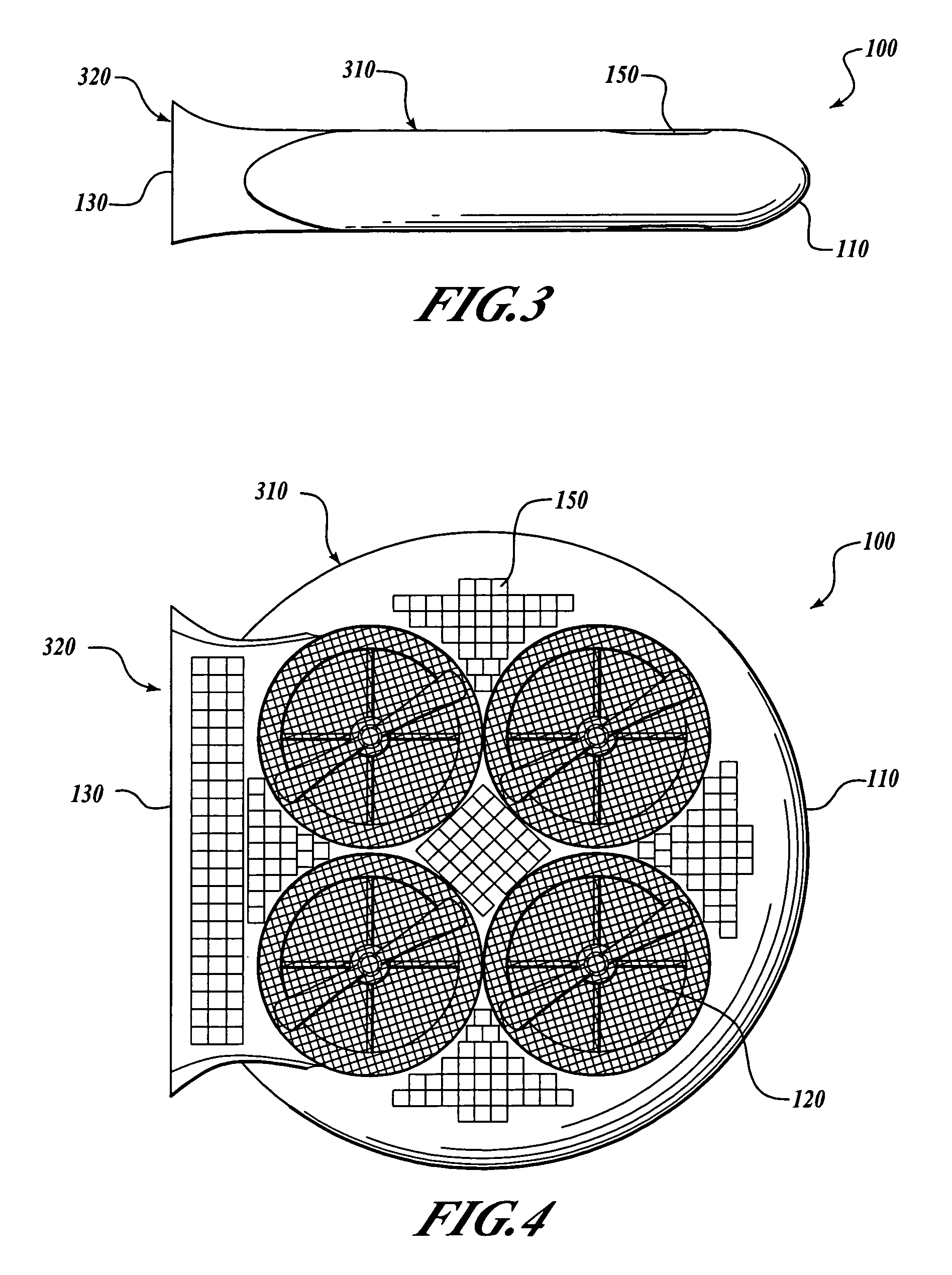Laser-tethered vehicle
a laser-tethered, vehicle technology, applied in the direction of process and machine control, energy-efficient board measures, instruments, etc., can solve the problems of complex control of such devices, inability to practically hand hold control panels, and involved data communication problems
- Summary
- Abstract
- Description
- Claims
- Application Information
AI Technical Summary
Benefits of technology
Problems solved by technology
Method used
Image
Examples
Embodiment Construction
[0030]By way of overview, embodiments of the present invention provide a method for remote powering and a position control system for a remote-controlled vehicle. An electromagnetic energy receiver is configured to receive an electromagnetic beam. The electromagnetic energy receiver is further configured to determine a position of the remote-controlled vehicle relative to a position of the electromagnetic beam. The vehicle is directed to maneuver to track the position of the electromagnetic beam.
[0031]FIG. 1 is a perspective view of a laser-tethered airborne device 100. The device 100 includes a structure or housing 110 which supports a propulsion system including a plurality of rotors 120. In one presently preferred embodiment, the rotors 120 are disposed to rotate so as to generate thrust in a direction opposed to a gravitational force. One presently preferred embodiment includes a plurality of rotors 120 that are disposed at a distance around a center of gravity of the device 100...
PUM
 Login to View More
Login to View More Abstract
Description
Claims
Application Information
 Login to View More
Login to View More - R&D
- Intellectual Property
- Life Sciences
- Materials
- Tech Scout
- Unparalleled Data Quality
- Higher Quality Content
- 60% Fewer Hallucinations
Browse by: Latest US Patents, China's latest patents, Technical Efficacy Thesaurus, Application Domain, Technology Topic, Popular Technical Reports.
© 2025 PatSnap. All rights reserved.Legal|Privacy policy|Modern Slavery Act Transparency Statement|Sitemap|About US| Contact US: help@patsnap.com



